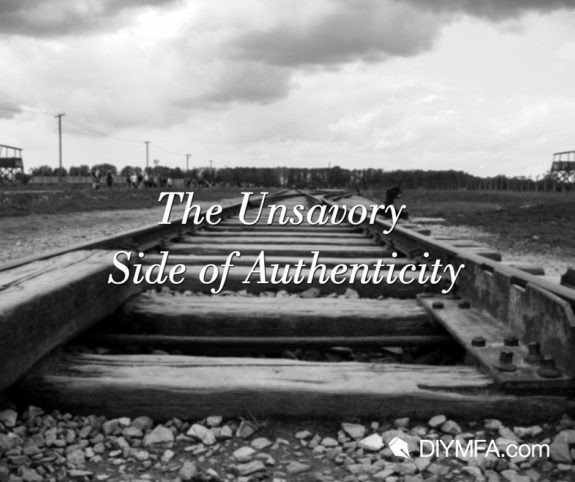In my previous article, we took a look at the world-building aspect of writing historical fiction and our responsibility, as writers, to represent the past faithfully. As we strive for authenticity, however, it’s inevitable that we’ll come face to face with some things that might be considered quite unsavory within the context of today’s norms.
History is full of things that can—and should—offend our modern sensibilities. So what can writers do when their obligation to historical accuracy comes into conflict with a 21st-century world view?
Consider Your Audience
Fans of historical fiction actually expect authenticity, not a whitewashed version of the past. You’ll disappoint them if you don’t deliver. To borrow a catchphrase from Monty Python, these readers do expect the Spanish Inquisition, in all its brutality. They want to be transported to the world of the past as it actually existed and will reward you with strong reviews when you achieve that.
Even so, we don’t want to serve up a dish of utter distaste. So what are some strategies we can use to mitigate the most unsavory aspects of the past and acknowledge our evolved understanding?
Point of View
This may be the most straightforward, and novels of World War II are prime examples. Stories of the Holocaust or the occupation of sovereign nations or the horrific medical experimentations of Josef Mengele are usually told from the POV of the victims or of someone who intervened or of someone powerless to do so rather than from the POV of the perpetrators of the atrocities.
Is your story set at the time of the Spanish conquest of the Incas or the Aztecs? Will you choose the point of view of the conquerors or the conquered? The former may seem, in some way, “natural” because there is such a vast written record to tap into. Global territorial expansion was a driving force among the highly competitive European powers of the time, so that must be represented for your story to ring true. But we now understand that these were thriving, highly-developed civilizations that were devastated and destroyed by the ambitions of colonialism. One way to acknowledge that would be to choose the point of view of the conquered. It’s just as authentic and perhaps even more interesting because of its rarity in earlier writing.
“But you just made my job that much harder,” I can hear you saying. Perhaps it’s just a matter of focusing your research differently, of looking into what archaeologists have uncovered. But think of it this way: wherever there are gaps in the record—regardless of the context of your story—therein lies your opportunity to shine as a novelist—to imagine what might have been and to reveal the past to your readers in all its dimensions.
Character
This is another technique of our craft that’s easy to apply. Is there something unsavory about what’s going on at the time of your story? Consider including a character who’s repulsed by those events or that state of the world.
This actually gives you lots of opportunity for character development and dramatic tension. Does your character merely stew internally over the wrongs they witness? If so, how does this impact their mental health and how they interact with others in the world? Does this internal turmoil eventually become their undoing? Or does the character take action—perhaps lash out against the injustices or, alternatively, quietly bring others around to their perspective? And what happens to the character as a result?
“But isn’t this just a plot device?” I can hear you asking. Crafted poorly, it could come across that way. But throughout history, there have been people who looked at what was going on in the world and questioned whether what they were observing was moral or just or right. Those people are no less authentic than the things they are questioning. So weaving them deftly into your tale is a natural way to portray the realities of a past world, including its wrongs.
Narrow Your Focus
I recall being struck by a comment Bernard Cornwell made in an online interview. I’ll have to paraphrase because I can’t find the video at the moment. He defined historical fiction as “the small story told against the backdrop of the large story.” It’s a very helpful way to think about strategies for dealing with elements of the past that don’t pass muster in today’s world.
Not every historical novel has to be an epic saga or have well-known historical characters on stage. More intimate stories are just as compelling if they draw us deeply into the life experiences of the characters. Think of photographs taken with a zoom lens. The subject of the photo is in focus and crystal clear. But the background is blurred—it’s still there, but in far less detail.
Finding Your Right Balance
These are just a few ideas on how to bridge the discord between past realities and modern sensibilities. No doubt you’ll think of others.
At the end of the day, the choices you make will depend on the premise of your story—what you want to say and how you want to say it. Do you want to draw attention to the discord? Or is the discord merely the backdrop against which your story plays out? Bookshelves the world over have room for both.

An award-winning author of historical fiction and a freelance editor, Pamela Taylor loves helping others polish their stories almost as much as she enjoys writing her own. She’s a member of the DFW Writers Workshop and the Editorial Freelancers Association and, for four years, was on the judges panel for the Ink & Insights Writing Contest. She shares her home with two Welsh Corgis who frequently remind her that a dog walk is a great way to get inspiration for that next chapter.







